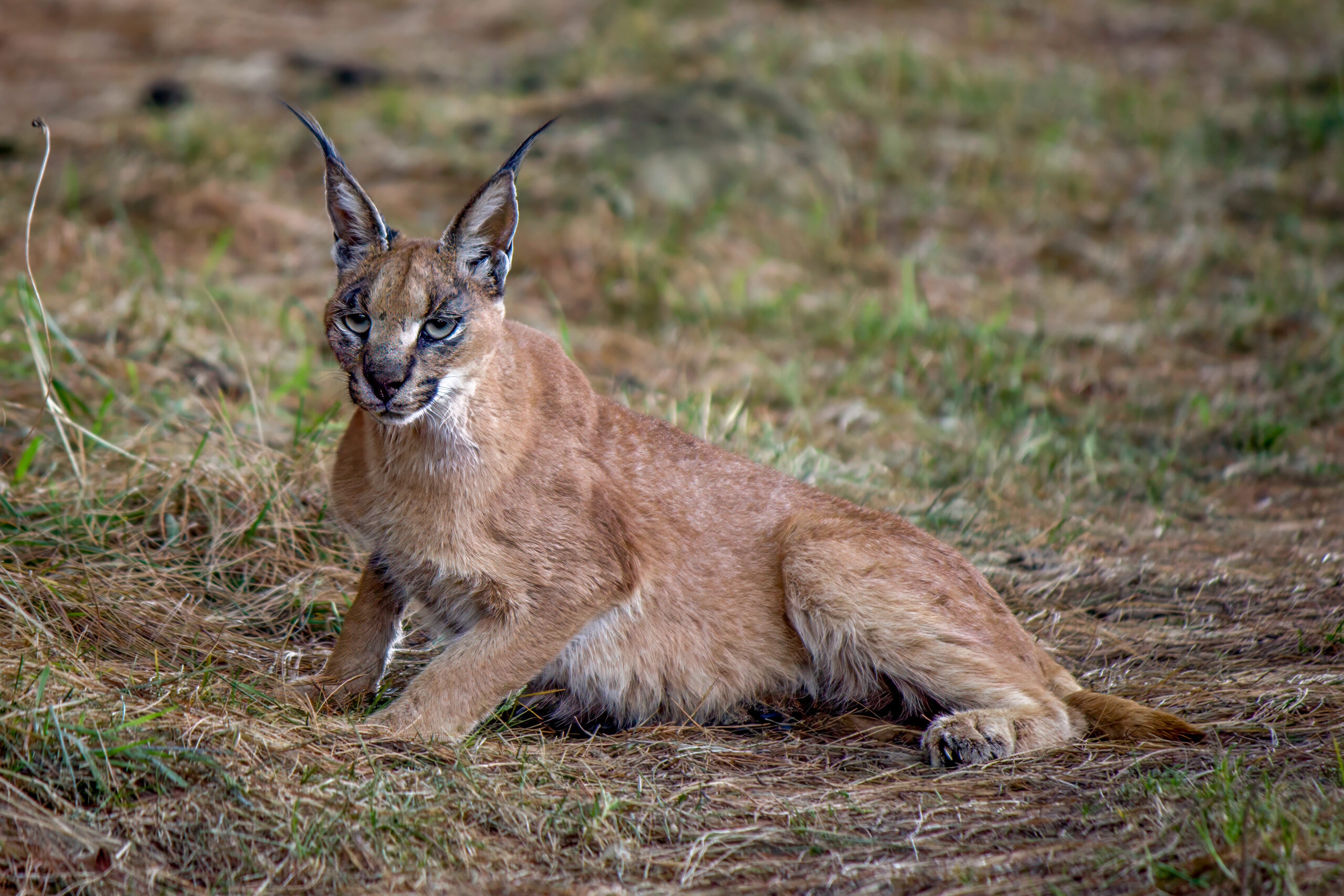Description
The jungle cat (Felis chaus), also known as the reed cat or swamp cat, is a medium-sized feline native to a wide range extending from Turkey and Egypt in the west, through the Middle East, and into South and Southeast Asia. Adults typically weigh between 4 and 16 kg (9 to 35 lbs), with males generally being larger than females. Their body length ranges from 60 to 76 cm (24 to 30 inches), with a relatively short tail of 20 to 31 cm (8 to 12 inches). The jungle cat has a slender build, with long legs. Its coat is a uniform sandy-brown or greyish color, often with faint stripes on the legs and tail. Unlike many other cats, it lacks any prominent spots or stripes. It is distinguished from similar species, such as the African wildcat (Felis lybica), by its larger size and more robust build, as well as its preference for wetter habitats.
Diet & Habitat
Jungle cats thrive in diverse habitats but are particularly associated with areas close to water, such as wetlands, marshes, and riverbanks. They can also be found in grasslands, shrublands, and open forests, and are not uncommon in agricultural fields close to human settlements. They avoid dense forests and arid regions.
These cats are versatile hunters, primarily feeding on rodents like rats and mice, as well as birds, frogs, fish, and even insects. They are known to be opportunistic feeders, adapting their diet based on availability. They hunt primarily by stalking and pouncing on their prey, using their keen senses of sight and hearing.
Behavior
Jungle cats are generally solitary animals, with each individual maintaining its own territory. They are primarily crepuscular, being most active during the early morning and late afternoon. However, they can also be nocturnal depending on local conditions and human activity.
These cats communicate through a range of vocalizations, scent markings, and body language. They are known to be excellent swimmers and may even dive to catch fish. Unlike many other felids, they do not climb trees often and prefer to stay on the ground.
Reproduction
The breeding season of jungle cats varies with geographic location but typically occurs in winter or early spring, depending on environmental conditions. In South Asia, for instance, it ranges from November to February. During this time, males become more vocal and may engage in aggressive encounters to win over females.
After a gestation period of approximately 63-66 days, females give birth to a litter of 2 to 4 kittens. The young are born in secluded dens, often located in dense vegetation or abandoned burrows. The mother cares for the kittens alone, weaning them at around 3 months of age. Juveniles reach sexual maturity at about 11 months but may stay with their mother for a longer period before dispersing.
Status
The jungle cat is currently classified as least concern by the IUCN due to its extensive range and large population. However, its population seems to be declining, particularly in Southeast Asia. It is facing threats from habitat destruction, particularly wetland drainage and agricultural expansion. They are also hunted for their fur and killed in retaliation for preying on poultry. Conservation efforts are necessary to monitor their populations and preserve their habitats to ensure their continued survival.







